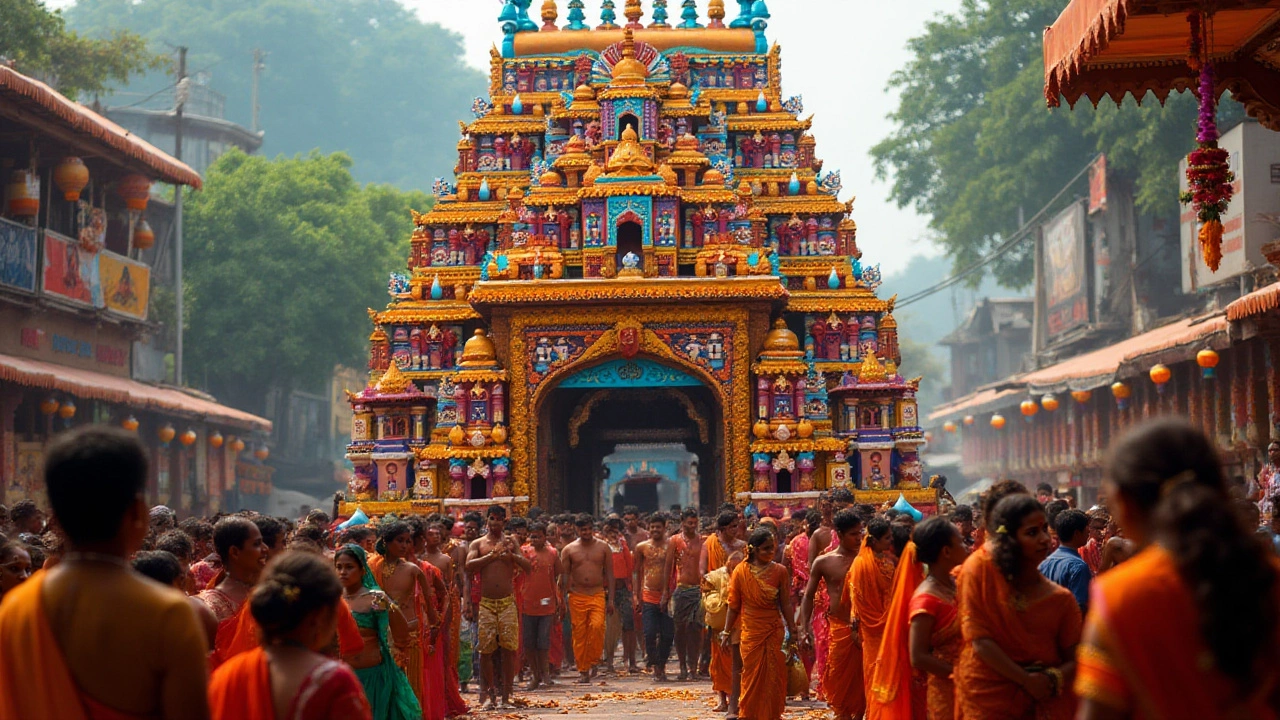Temple Visit Guide: Essential Etiquette and Tips for Indian Temples
When planning a visit to an Indian temple, a sacred space rooted in centuries of ritual, architecture, and community worship. Also known as mandir, it’s more than a building—it’s a living part of daily life for millions. Whether you’re standing outside the golden spires of Tirupati or walking through the quiet courtyards of Khajuraho, how you enter matters just as much as what you see.
Many visitors don’t realize that temple etiquette, a set of unspoken but strictly followed rules shaped by regional traditions and religious texts. Also known as temple customs, it includes everything from footwear removal to hand gestures isn’t optional. In South India, you might be asked to leave your phone in a locker. In North India, women may need to cover their heads. Some temples, like Sabarimala or Vaishno Devi, have strict dress codes—no shorts, no leather, no makeup. These aren’t just traditions; they’re acts of respect that keep the space sacred for worshippers. Ignoring them doesn’t just offend—it can get you turned away at the gate.
There’s also the matter of rituals, the physical acts of devotion like offering flowers, ringing bells, or receiving prasad. Also known as puja practices, they’re not performances for tourists. Watching a priest chant in Sanskrit or seeing a devotee circle the sanctum three times might look like a show, but it’s deeply personal. You don’t have to join in—but you should stay quiet, step back, and avoid blocking paths. Don’t point your feet toward the deity. Don’t take photos inside the inner shrine unless allowed. And never touch idols unless it’s part of a guided ritual you’re invited into.
And then there’s the temple entry rules, the practical barriers you’ll face: timed visits, ticket queues, and sometimes gender-based restrictions. Also known as temple access policies, they vary wildly by region and sect. Some temples only allow Hindus inside. Others welcome everyone but require a donation. A few, like the famous Padmanabhaswamy Temple, still use ancient methods to manage crowds—no digital tickets, no online bookings. You’ll need to arrive early, dress plainly, and be patient. The line might be long, but the wait often becomes part of the experience.
What you’ll find in the posts below isn’t a list of dos and don’ts from a textbook. It’s real advice from travelers who got it wrong—and right. You’ll learn how to pick the right clothes for a temple in Varanasi versus one in Kerala. You’ll see why some temples ban cameras but allow silent reflection. You’ll understand why you shouldn’t eat meat before visiting certain shrines, even if you’re not religious. These aren’t mysteries. They’re rules that keep the energy of the place alive.
There’s no single way to visit a temple in India. But there’s one rule that holds everywhere: show up with humility. Not because you have to—but because the place asks for nothing less.
